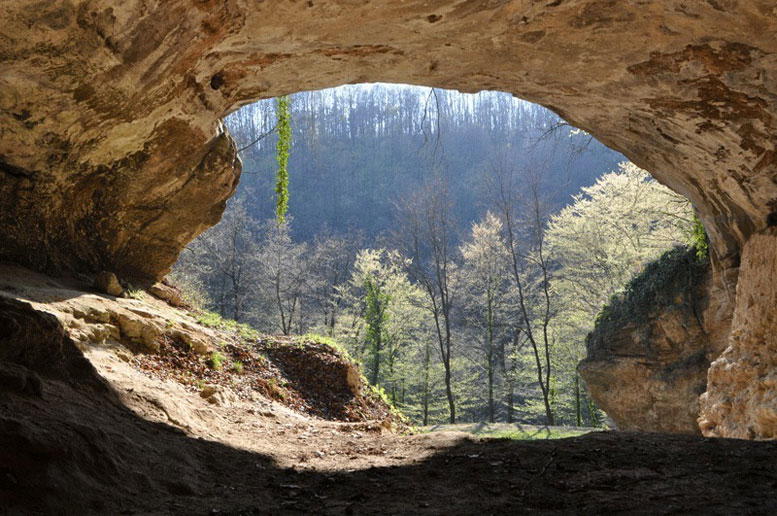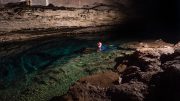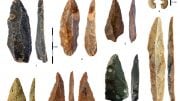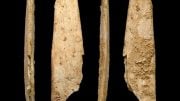
Entrance of the Vindija Cave in Croatia. © MPI f. Evolutionary Anthropology/ J. Krause
A team of researchers has sequenced to high-quality the genome of a female Neanderthal from a bone discovered in 1980 in Vindija Cave, Croatia.
The high-quality genome of a Neanderthal from Croatia in southern Europe has been sequenced at the Max Planck Institute for Evolutionary Anthropology in Leipzig, Germany. This Neanderthal is more closely related to the group of Neanderthals that mixed with the ancestors of present-day non-Africans than the previously sequenced Neanderthal from the Altai Mountains. This allowed the researchers to identify additional Neandertal DNA in the genomes of present-day people.
Researchers at the Max Planck Institute for Evolutionary Anthropology in Leipzig have sequenced to high-quality the genome of a female Neanderthal from a bone discovered in 1980 in Vindija Cave, Croatia. This is the second high-quality genome sequence of a Neandertal to be published; in 2014 the same group sequenced the genome of an older Neandertal from the Altai Mountains in Siberia.
By comparing the two Neanderthals the scientists could show that they were much more closely related to each other than any two humans are today. “Such a close relationship for individuals that lived thousands of kilometers apart and probably thousands of years apart shows that Neanderthals must have had a small population size,” says Fabrizio Mafessoni, a researcher at the Max Planck Institute.
The team also compared the two Neandertals to people living today to learn more about the Neanderthals who mixed with the ancestors of present-day non-Africans. “We see that the Croatian Neandertal is more closely related to the Neanderthals that mixed with our ancestors than the older Neandertal from Siberia”, explains Steffi Grote, who analyzed the genomes in Leipzig. The research showed that between 1.8 and 2.6 percent of the genomes of people outside of Africa originate from this admixture.
Using the new Neanderthal genome the researchers were able to identify additional Neanderthal variants that entered the genomes of modern humans by interbreeding. “The Croatian Neanderthal genome helps us to identify more of the Neanderthal DNA in humans living today,” says Kay Prüfer who together with Svante Pääbo led the analysis of the new Neanderthal genome. “Some of these variants seem to provide protection from certain diseases while other variants are associated with increased susceptibility to some diseases.”
Reference: “A high-coverage Neandertal genome from Vindija Cave in Croatia” by Kay Prüfer, Cesare De Filippo, Steffi Grote, Fabrizio Mafessoni, Petra Korlević, Mateja Hajdinjak, Benjamin Vernot, Laurits Skov, Pinghsun Hsieh, Stéphane Peyrégne, David Reher, Charlotte Hopfe, Sarah Nagel, Tomislav Maricic, Qiaomei Fu, Christoph Theunert, Rebekah Rogers, Pontus Skoglund, Manjusha Chintalapati, Michael Dannemann, Bradley J. Nelson, Felix M. Key, Pavao Rudan, Željko Kućan, Ivan Gušić, Liubov V. Golovanova, Vladimir B. Doronichev, Nick Patterson, David Reich, Evan E. Eichler, Montgomery Slatkin, Mikkel H. Schierup, Aida M. Andrés, Janet Kelso, Matthias Meyer and Svante Pääbo, 5 October 2017, Science.
DOI: 10.1126/science.aao1887









Be the first to comment on "Biologists Sequence a New Neanderthal Genome from Vindija Cave in Croatia"